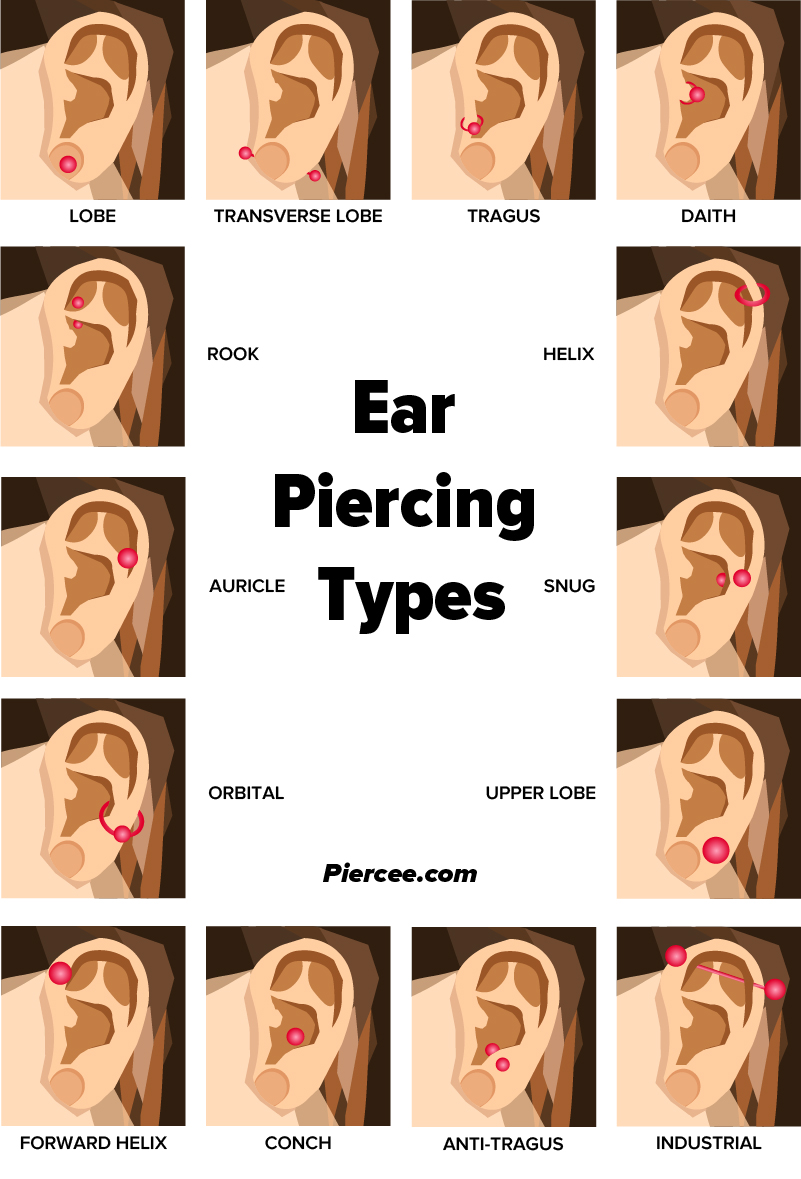Ear piercing has been a popular form of body modification for centuries, with styles and techniques evolving over time. Whether you’re a piercing enthusiast or a curious beginner, understanding the ear piercing chart is crucial for making informed decisions about your next ear adornment. This guide will delve deep into everything you need to know about the ear piercing chart, ensuring you’re well-equipped with the knowledge to choose the perfect piercing for you.
Key Takeaways
- The ear piercing chart is a visual representation of the various types of ear piercings available.
- Understanding the chart helps in selecting the right piercing based on personal style, anatomy, and healing time.
- Different piercings have different levels of pain and healing durations.
- Consulting with a professional piercer is essential for a safe and successful piercing experience.
What is an Ear Piercing Chart?
An ear piercing chart is a diagram that showcases the various locations on the ear where piercings can be done. It serves as a guide for both piercers and those looking to get pierced, illustrating the different styles and placements available. The chart typically includes popular piercings such as the lobe, helix, tragus, and more, each with its unique characteristics and appeal.

Why is the Ear Piercing Chart Important?
The ear piercing chart is essential for several reasons. Firstly, it helps individuals visualize where different piercings are located on the ear, aiding in decision-making. Secondly, the chart provides information on the healing times and potential pain levels associated with each piercing type. Lastly, it serves as a reference for piercers to ensure accurate placement and technique.
Types of Ear Piercings Explained
Understanding the various types of ear piercings is crucial for selecting the right one for your style and comfort. Below is a detailed look at some popular ear piercings:
Lobe Piercing
The lobe piercing is the most common and traditional type of ear piercing. It is located on the fleshy lower part of the ear and is known for its minimal pain and quick healing time, typically around 6-8 weeks. Lobe piercings are versatile, allowing for a wide range of jewelry styles.
Helix Piercing

Positioned on the upper cartilage of the ear, the helix piercing is a popular choice for those looking to add a bit of edge to their look. It tends to have a moderate pain level and a longer healing time of 3-6 months due to the cartilage tissue.
Tragus Piercing
Located on the small, thick section of cartilage that partially covers the ear canal, the tragus piercing is a unique and stylish option. The pain level is moderate, and healing can take between 3-9 months.
Conch Piercing
The conch piercing is done on the inner cartilage of the ear and can be either an inner or outer conch piercing. Known for its striking appearance, this piercing has a moderate to high pain level and a healing time of 6-12 months.

Daith Piercing
The daith piercing passes through the innermost cartilage fold of the ear. It’s often chosen for its aesthetic appeal and potential migraine-relieving benefits. The pain level is moderate, and healing can take 6-9 months.
Industrial Piercing
An industrial piercing consists of two piercings connected by a single piece of jewelry, usually a barbell, across the upper ear. This type of piercing is known for its bold look and higher pain level, with a healing time of 4-6 months.
Choosing the Right Ear Piercing for You
When selecting an ear piercing, consider the following factors:
- Personal Style: Choose a piercing that complements your style and personality.
- Anatomy: Not all ear shapes are suitable for every type of piercing. Consult with a professional to determine what works best for your ear structure.
- Pain Tolerance: Different piercings have varying pain levels. Consider your pain tolerance when making a decision.
- Healing Time: Be prepared for the commitment required for the healing process of certain piercings.

Caring for Your New Piercing
Proper aftercare is crucial for the healing process and to prevent infections. Here are some aftercare tips:
- Clean the piercing with a saline solution twice daily.
- Avoid touching the piercing with unwashed hands.
- Refrain from changing the jewelry until the piercing is fully healed.
- Avoid sleeping on the side of the new piercing to prevent irritation.
Consulting with a Professional Piercer
Before getting a piercing, it’s important to consult with a professional piercer. They can provide valuable insights into the best piercing options for your anatomy, ensure the procedure is done safely, and offer personalized aftercare advice. A professional piercer will also use sterile equipment and follow best practices to minimize the risk of complications.
The ear piercing chart is an invaluable tool for anyone interested in ear piercings. By understanding the different types of piercings and their unique characteristics, you can make informed decisions that align with your personal style and comfort level. Remember to prioritize safety and consult with a professional piercer to ensure a successful and enjoyable piercing experience.
With this comprehensive guide, you’re now equipped with the knowledge to explore the exciting world of ear piercings. Whether you’re adding to your existing collection or getting your first piercing, the ear piercing chart is your go-to resource for making the best choice.